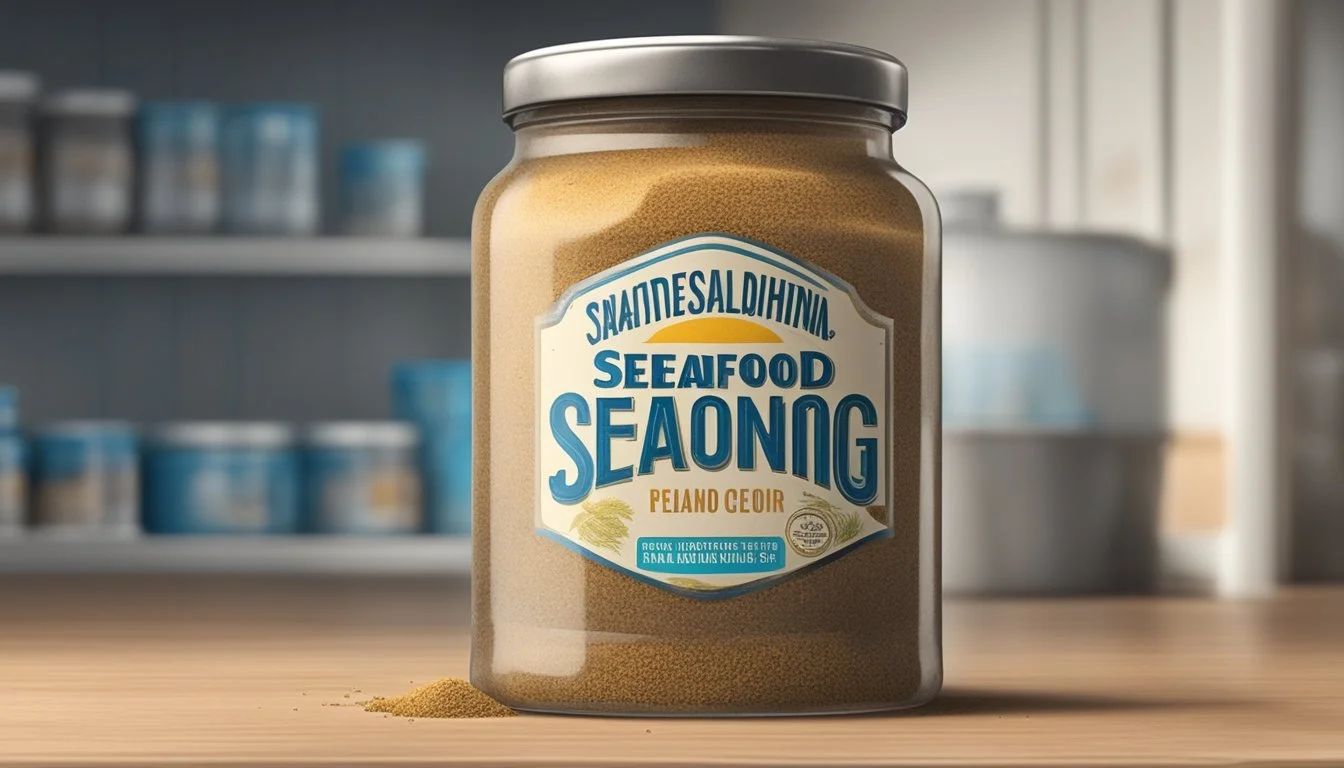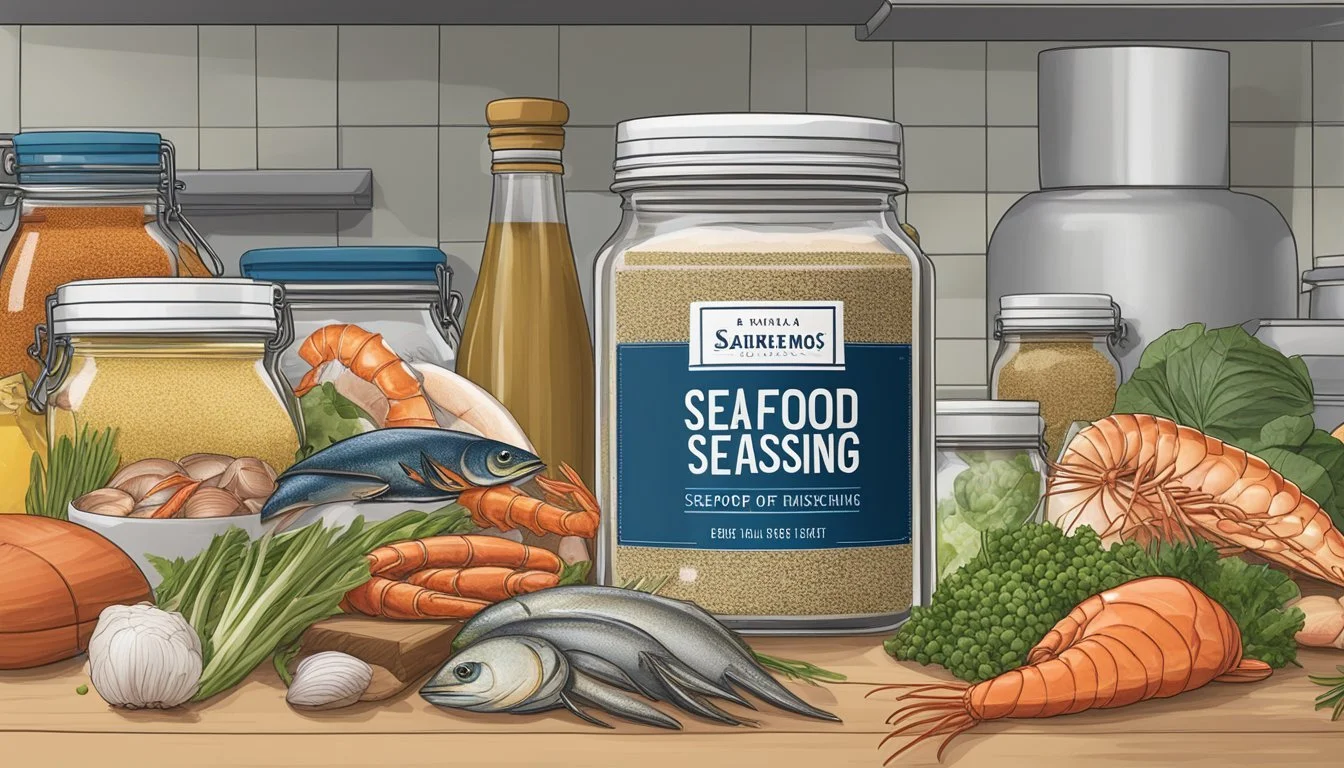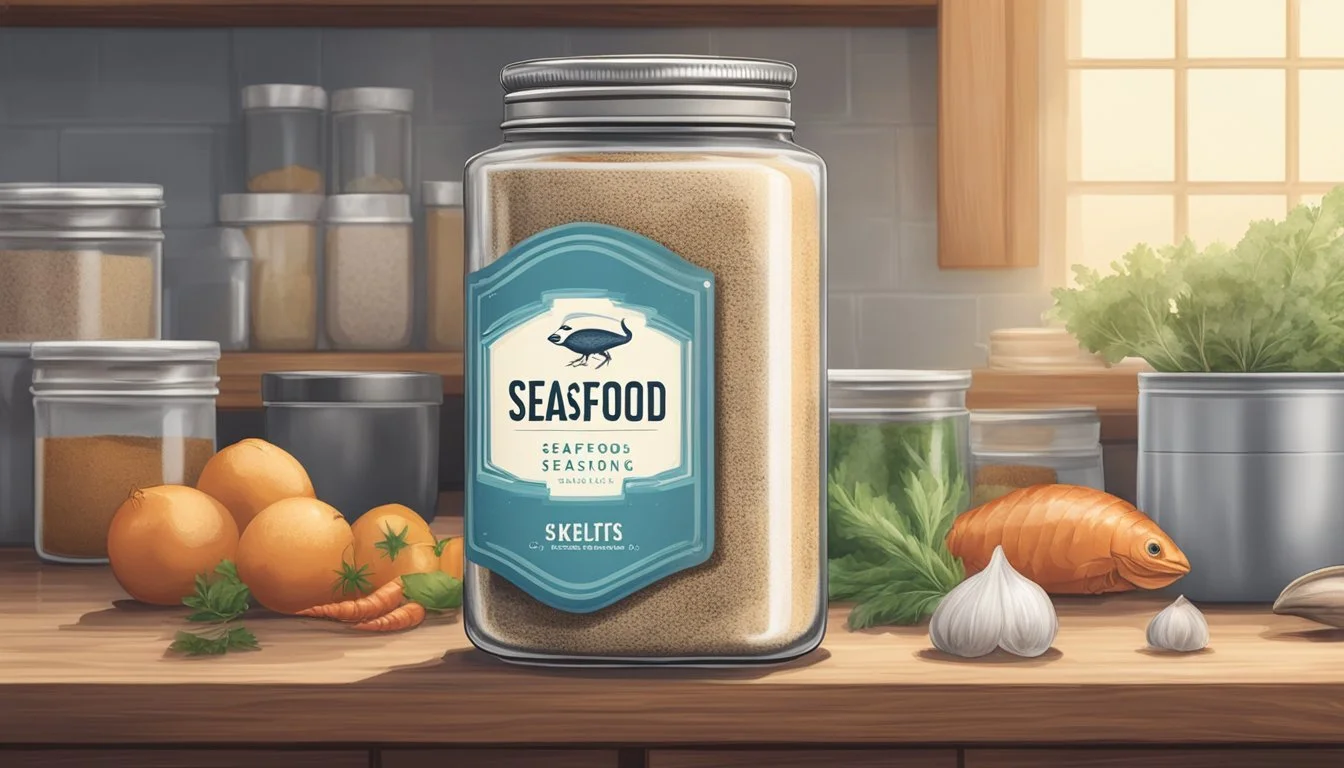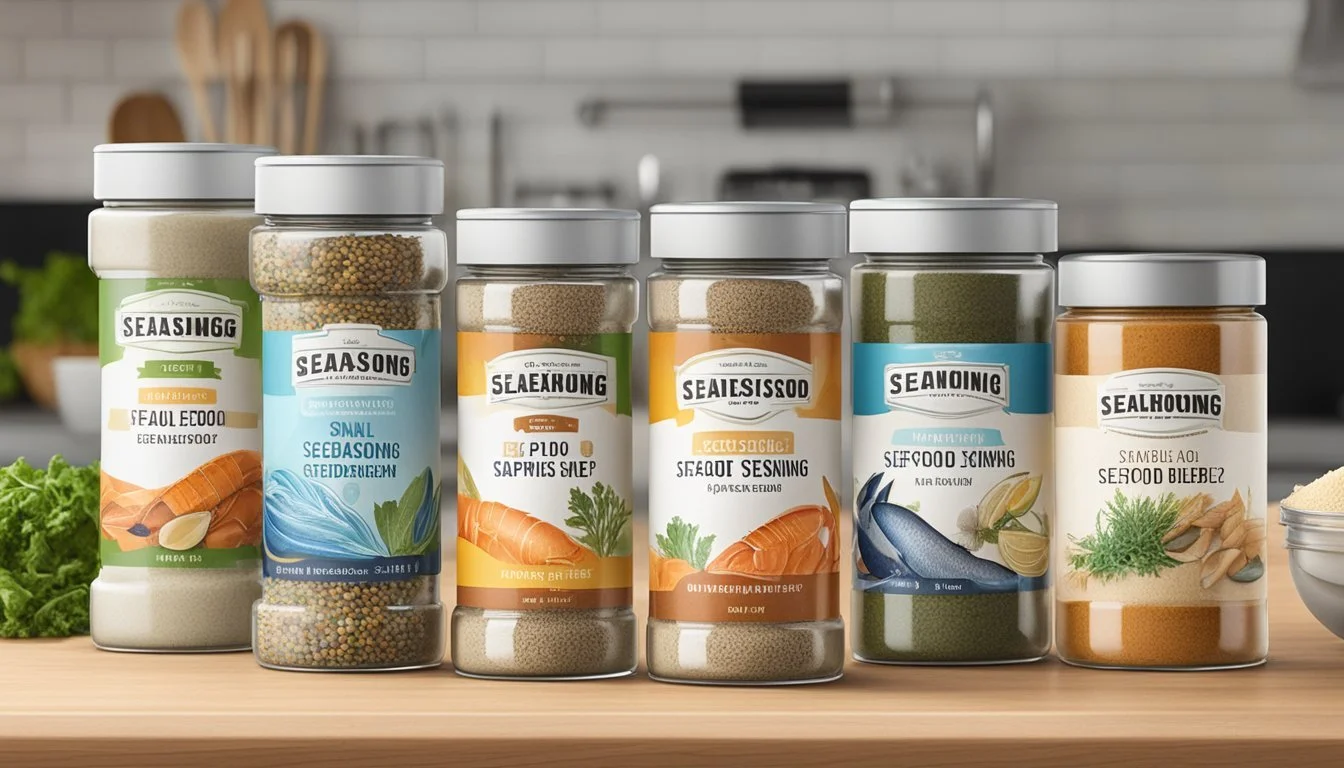Does Seafood Seasoning Expire?
Shelf Life and Storage Tips
Seafood seasoning, like many other spice blends, does have an expiration date that affects its flavor and potency. As the seasoning ages, the essential oils responsible for its distinct taste evaporate, leading to a milder and less impactful flavor. McCormick, a trusted name in spices, suggests that ground spices, common in many seafood seasonings, typically maintain their optimal potency for 2 to 4 years.
Proper storage is crucial in extending the life of seafood seasoning. If kept in an airtight container away from heat, moisture, and direct sunlight, blends like Old Bay can maintain their robust taste for up to three years. Environmental factors play a significant role, and minimizing exposure can make a noticeable difference.
While some spices can last indefinitely, such as vanilla extract and salt, most seasoning blends will fade over time. Regularly checking the condition of your spices ensures that your culinary creations remain flavorful and enjoyable. By understanding the factors that impact the longevity of seafood seasoning, you can make informed choices about storage and usage.
Understanding Seafood Seasoning
Seafood seasoning has a rich history and consists of various ingredients that enhance the flavor of fish and other seafood dishes.
Historical Background
Seafood seasoning has ancient roots, with different cultures developing their own unique blends over centuries. Ancient Romans used mixtures of herbs and salt to preserve and season fish. This tradition evolved through the Middle Ages, with regional variations forming the basis for many of today's popular blends.
In the 20th century, commercial production of seafood seasoning began. Companies like McCormick introduced standardized blends, making it easier for home cooks to consistently achieve flavorful dishes. The development of these seasonings coincided with the rise of convenience cooking, making seafood seasoning a staple in many households.
Common Ingredients
Most seafood seasonings contain a blend of herbs and spices designed to complement the delicate flavors of fish and shellfish. Common ingredients include paprika, which adds a mild heat and vibrant color, and celery salt, providing a savory backbone. Black pepper and cayenne pepper are often included for their heat and depth.
Other frequently used components are mustard powder and bay leaves, which contribute unique aromatic qualities. Dried thyme and oregano bring an earthy flavor, enhancing the overall taste profile.
Lemon zest or citrus peel is sometimes added for a fresh, zesty finish. The ingredients work together to provide a balanced seasoning that highlights the natural taste of seafood without overwhelming it. The specific blend can vary greatly, reflecting regional tastes and culinary traditions.
Shelf Life of Seafood Seasoning
Seafood seasoning, like all spices, has a finite shelf life. The potency, flavor, and aroma can significantly diminish over time depending on how the seasoning is stored and the quality of its ingredients.
Factors Affecting Potency
Storage Conditions
Proper storage is crucial to maintaining the quality of seafood seasoning. It should be kept in an airtight container away from heat, moisture, and light. Exposure to these elements can cause the seasoning to lose its flavor and aroma more quickly.
Ingredient Quality
The quality of the ingredients used in the seasoning blend affects its shelf life. Higher quality ingredients tend to retain their potency for longer periods. Spices like paprika or black pepper are prone to losing their color and flavor faster than others.
Packaging
The type of packaging also plays a role in determining how long seafood seasoning can stay fresh. Vacuum-sealed or nitrogen-flushed packaging can help preserve the seasoning's potency and flavor for a longer time compared to standard containers.
Expiration Date
Always check the expiration date on the packaging. While the seasoning might still be safe to use past this date, its flavor and aroma could be vastly diminished. The typical shelf life for most seafood seasonings ranges from 6 months to 3 years, depending on storage and ingredients.
Proper Storage Practices
For seafood seasoning to maintain its potency and flavor, proper storage is essential. Adhering to ideal conditions and following specific storage tips can significantly extend the shelf life of your seasoning blend.
Ideal Conditions for Preservation
Seafood seasoning should be stored in a cool, dry place. Moisture and heat can degrade the essential oils responsible for the flavor, so it's important to avoid these elements.
An airtight container is ideal for storage as it protects the seasoning from air and humidity. Direct sunlight should also be avoided, as it can cause the spices to lose their vibrancy and potency.
Storing the seasoning in a pantry or spice rack at room temperature, away from stoves and windows, provides a stable environment.
Storage Tips to Extend Shelf Life
To maximize the longevity of seafood seasoning, always use airtight containers. This helps to lock in freshness and keep moisture out.
It’s beneficial to keep the seasoning in its original packaging if it is resealable, or transfer it to a glass or plastic container with a tight seal. Labeling the container with the purchase or expiration date can help keep track of its age.
For extended storage, some choose to freeze their seasoning. Freezing can preserve the seasoning's quality by minimizing exposure to environmental factors. However, ensure the container is freezer-safe and tightly sealed to prevent freezer burn.
Utilizing Seafood Seasoning
Seafood seasoning adds depth and complexity to various dishes. Below, explore classic applications and inventive ways to incorporate seafood seasoning into your culinary repertoire.
Classic Recipes and Combinations
Seafood seasoning is a staple in many traditional dishes. Shrimp boils and crab feasts often rely on a blend of spices to enhance the natural flavors of the seafood. Old Bay seasoning, for example, is commonly used for these purposes.
For lobster, a simple sprinkle of seafood seasoning before grilling or boiling can elevate its taste. Fish fillets, whether baked, grilled, or fried, benefit from a mix of paprika, celery salt, and black pepper, which are typical components of seafood seasoning.
For side dishes, consider potatoes and corn seasoned with the same blend. These sides absorb the flavors well and complement seafood. Using seafood seasoning on vegetables such as bell peppers and onions adds a savory touch.
Creative Uses in Cooking
Seafood seasoning isn’t just for the sea. It can enhance a variety of dishes in surprising ways. Sprinkle it on popcorn for a unique snack or use it to season French fries for a zesty twist.
For poultry and meat, incorporating seafood seasoning can add a new flavor dimension. Rub it on chicken before roasting or even mix it into burger patties for a flavorful kick.
Vegetables like zucchini and squash can be sautéed with seafood seasoning, providing a burst of flavor that pairs well with a variety of main courses. Whether in classic recipes or innovative uses, seafood seasoning proves to be a versatile addition to any kitchen.
Recognizing and Mitigating Loss of Flavor
Seafood seasoning can lose its potency and aromatic qualities over time. Recognizing the signs of weakened blends and knowing when to replace your seasoning keeps your dishes flavorful and enjoyable.
Identifying Weakened Blends
Expired seafood seasoning often has a noticeably weaker flavor. The essential oils in spices evaporate, resulting in a less aromatic and less potent blend.
An easy way to test potency is by smelling and tasting a small amount. If the seasoning lacks the strong, distinct flavors you remember, it has likely lost its effectiveness.
Color can also signal a weakened blend. Faded spices indicate prolonged exposure to light and air, contributing to loss of flavor.
When to Replace Your Seasoning
It is crucial to replace seafood seasoning past its expiration date or when significant flavor loss is detected. Ground spices, a major component of seafood seasoning, generally maintain good flavor for 2 to 4 years.
Store seafood seasoning in airtight containers, away from heat, moisture, and sunlight to extend its shelf life. If your seasoning fails these storage practices, it may need replacement sooner.
Regularly evaluating your seasonings for freshness ensures that your culinary creations remain flavorful and satisfying. Proper storage habits help mitigate flavor loss, but vigilance in replacing weakened blends remains important.
Specific Components and Their Roles
Seafood seasoning consists of a mixture of herbs and spices, each meticulously chosen to enhance the flavors of seafood dishes. Every component plays a unique role in building a balanced and aromatic seasoning blend.
Signature Spices in Detail
Salt: The cornerstone of seafood seasoning, salt helps to enhance the natural flavors of the seafood. It also acts as a preservative and tenderizer.
Paprika: Available in sweet or smoked varieties, paprika adds a vibrant red color and a mild, sweet, and smoky flavor to the seasoning.
Black Pepper: Black pepper provides a subtle, mild heat and brings depth to the seasoning blend, making it essential for balanced flavor.
Garlic Powder: Adds a rich and savory flavor that complements the natural taste of seafood beautifully.
Onion Powder: Provides a mild yet aromatic flavor, enhancing the overall seasoning profile without overwhelming the seafood.
Celery Salt: Combines the flavors of celery seed and salt, adding an earthy and slightly bitter note to the mix.
Herbs and Their Contributions
Thyme: This herb imbues a subtle earthiness and has a slightly minty undertone, offering complexity to the seasoning.
Oregano: Known for its peppery and slightly bitter flavor, oregano enhances the overall taste by adding a Mediterranean touch.
Bay Leaves: Often ground into the seasoning, bay leaves introduce a subtle, aromatic flavor that complements the stronger spices.
Dill Weed: Adds a delicate, fresh, and slightly tangy flavor that pairs well with seafood.
Parsley: Offers a mild, slightly peppery taste and is often used for both flavor and garnish in seafood dishes.
Basil: Basil brings a fragrant, slightly sweet flavor profile that balances well with other herbs and spices in the blend.
By combining these herbs and spices, seafood seasoning achieves a rich, layered flavor profile that can elevate any seafood dish. Each component contributes uniquely, ensuring a well-rounded, complimentary seasoning.
Exploring Seasoning Blend Variations
Seasoning blends are diverse and can greatly affect the taste of your dishes. Different regions and cultures have unique seasoning blends, and there are also many alternatives and substitutes available.
Regional and Cultural Varieties
Seasoning blends often reflect the specific culinary traditions of different regions and cultures. For example, Old Bay seasoning is a staple in Maryland cuisine and is renowned for its complex mixture of celery salt, paprika, black pepper, and other spices.
Cajun seasoning hails from Louisiana and typically includes garlic powder, onion powder, black pepper, cayenne pepper, and sometimes even herbs like thyme and oregano for a spicy and savory kick.
In Middle Eastern cuisine, blends such as baharat incorporate a combination of black pepper, cumin, cinnamon, and coriander, offering a complex and distinctive flavor profile.
Every blend brings a unique twist, whether it's the smoked paprika in Spanish seasoning or the bold flavors of Indian garam masala.
Alternative Blends and Substitutes
Sometimes specific seasoning blends may not be available, and substitutions become necessary. For example, when Old Bay is unavailable, a balanced mix of celery salt, paprika, and black pepper can serve as a substitute.
Cajun seasoning can be approximated by mixing smoked paprika, garlic powder, onion powder, black pepper, and cayenne pepper for a savory yet spicy alternative.
Using whole spices and creating your own blends can also be an effective way to maintain freshness and potency. Ground spices lose their flavor faster than whole spices, so freshly ground spices can offer a more robust taste.
Different blends and substitutes allow for versatility in the kitchen, enabling cooks to adapt and maintain distinctive and complex flavors in their dishes.
Health and Dietary Considerations
Seafood seasoning expiration isn't just about flavor; it's also crucial to consider health aspects tied to its ingredients, such as salt content and whether additives or organic ingredients are used.
Salt Content and Sodium Considerations
Sodium plays a significant role in many seafood seasonings. While it enhances taste, excessive sodium can lead to health issues like high blood pressure. Consumers should check the ingredient list for sodium content.
Some seasonings use sea salt, which may offer a slightly different flavor profile. Others might use regular table salt or even salt substitutes. It's important to choose options that complement one's dietary needs, especially for those on sodium-restricted diets.
Additive-Free and Organic Options
The presence of additives in seafood seasonings can impact health. Some people prefer seasonings without artificial colors, preservatives, or MSG. These additive-free options often have a cleaner ingredient list and can be seen as healthier alternatives.
Organic seasonings are also available, which may appeal to those looking to avoid pesticides and synthetic fertilizers. These options typically use bold and natural ingredients, potentially offering greater health benefits compared to conventional counterparts.








